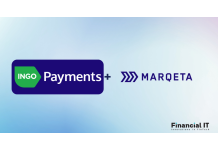SumUp Unveils New Products and Features to Its Global...
- 04.04.2025 05:15 pm
Ingo Payments Selects Marqeta as Issuer Processor for...
- 04.04.2025 01:35 pm
Top Ten Payments Companies Processed $10.6 Trillion in...
- 04.04.2025 11:55 am
VizyPay Celebrates Fourth Consecutive Year on the 2025...
- 04.04.2025 11:15 am
Mastercard and Nomba Collaborate in an Effort to...
- 04.04.2025 10:25 am
Temu Expands Partnership with Adyen as It Launches...
- 03.04.2025 03:25 pm
Wincent Selects OpenPayd to Power Its Global Payment...
- 03.04.2025 11:05 am
B2B Payments Specialist Aria Integrates Mangopay to...
- 03.04.2025 09:35 am
Everee and dlivrd Introduce Expedite Visa® Pay Card...
- 02.04.2025 05:30 pm
Outpayce Launches First 'Payments Marketplace...
- 02.04.2025 11:00 am
PXP And PayXpert Ltd. Break Down Borders: Unleashing...
- 02.04.2025 10:55 am
myTU Introduces Google Pay For Secure Contactless...
- 02.04.2025 09:25 am






















